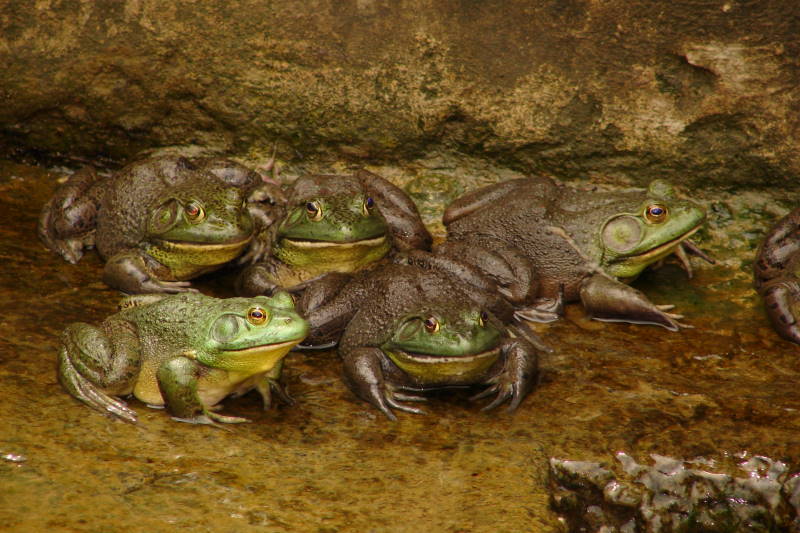American bullfrog (Lithobates catesbeianus)
Invasive?
The American bullfrog was deliberately imported from its native area the eastern part of North America, from the 19th century to Europe, bred and repeatedly released. It was an asset for gastronomy, ornamental trade and served as fishing bait. They compete with native frog and amphibian species for spawning sites, food, and habitat. The frogs' abundance is probably boosted by warm winters, when fewer hibernating American bullfrogs die.
Where?
The American bullfrog lives in still waters rich in plants, such as lakes, ponds and swamps. It prefers warmer waters. The call of the males is quite loud and reminds of ox calls.
Aussehen?
It is one of the largest frog species in the world (15-20 cm in body size), making it larger than all native frog species. The tadpole can also grow up to 14 cm. Recognizing feature of adult animals is the strikingly large eardrum below the eyes. The body is olive green to gray-brown in color and often dark spotted. The sound bladder in males is located on the throat and not on the side as in native water frogs.
Distribution in Luxembourg:https://neobiota.lu/lithobates-catesbeianus/

"Ouaouaron (Lithobates catesbeianus)" by Bouligab is
licensed under CC BY-SA 2.0

"Lithobates catesbeianus DT [Z Yanzatza] 0803 (14)" by Archivo Murciélago Blanco is licensed under CC BY-SA 2.0
Media
This website uses no external trackers, no analytics, just session cookies and values your online privacy.
